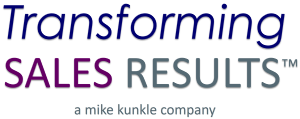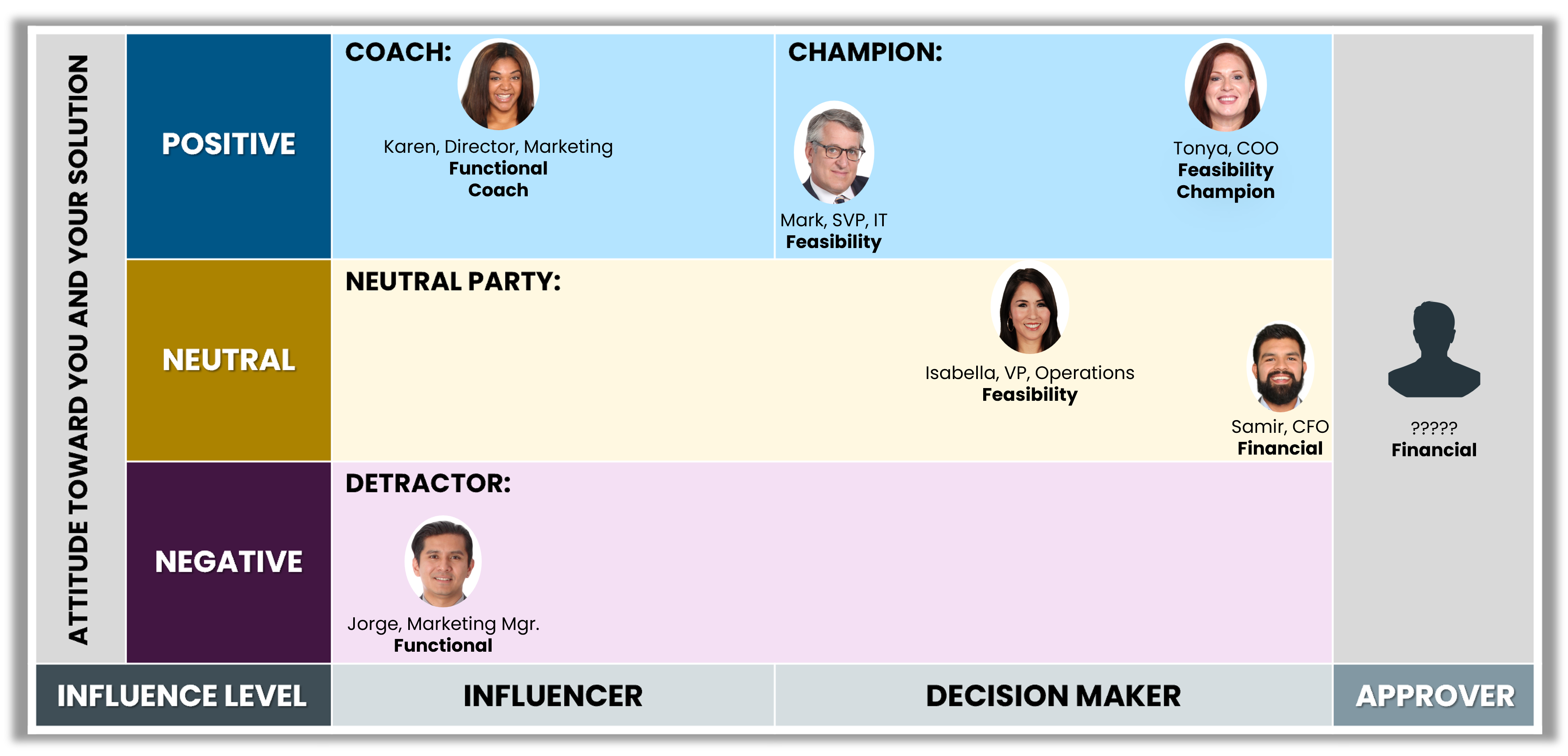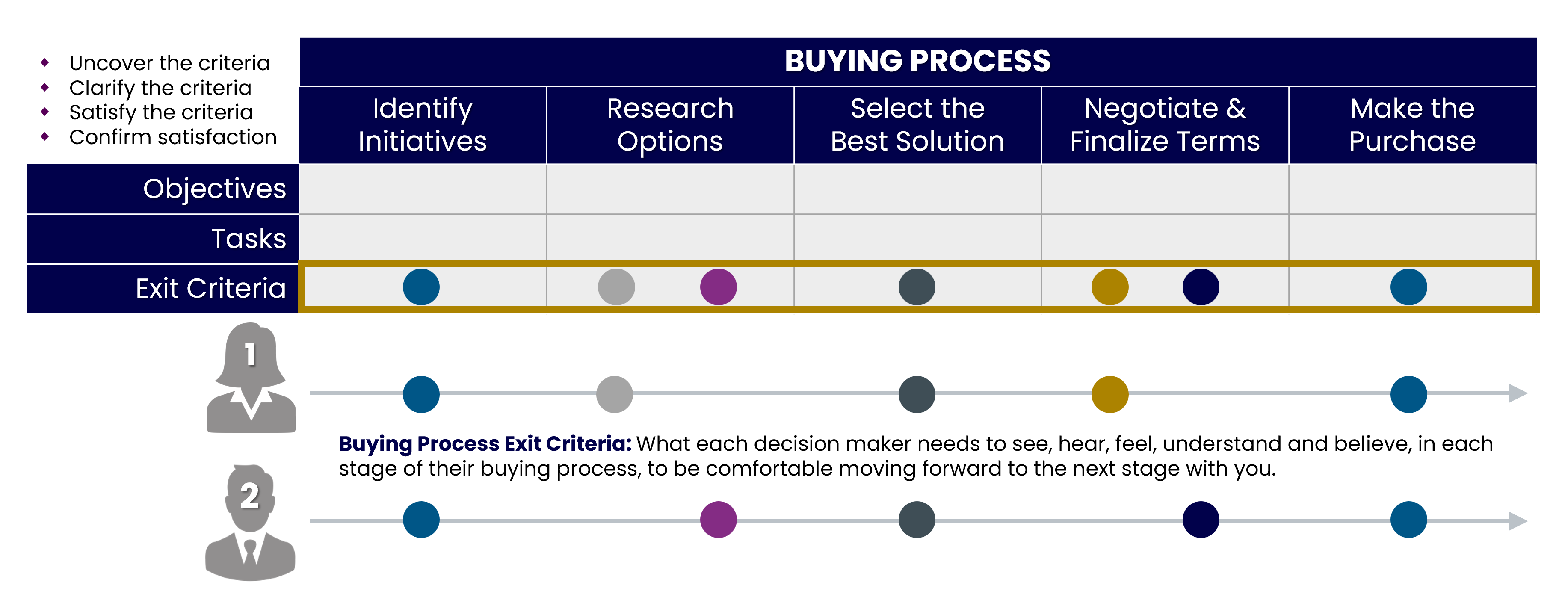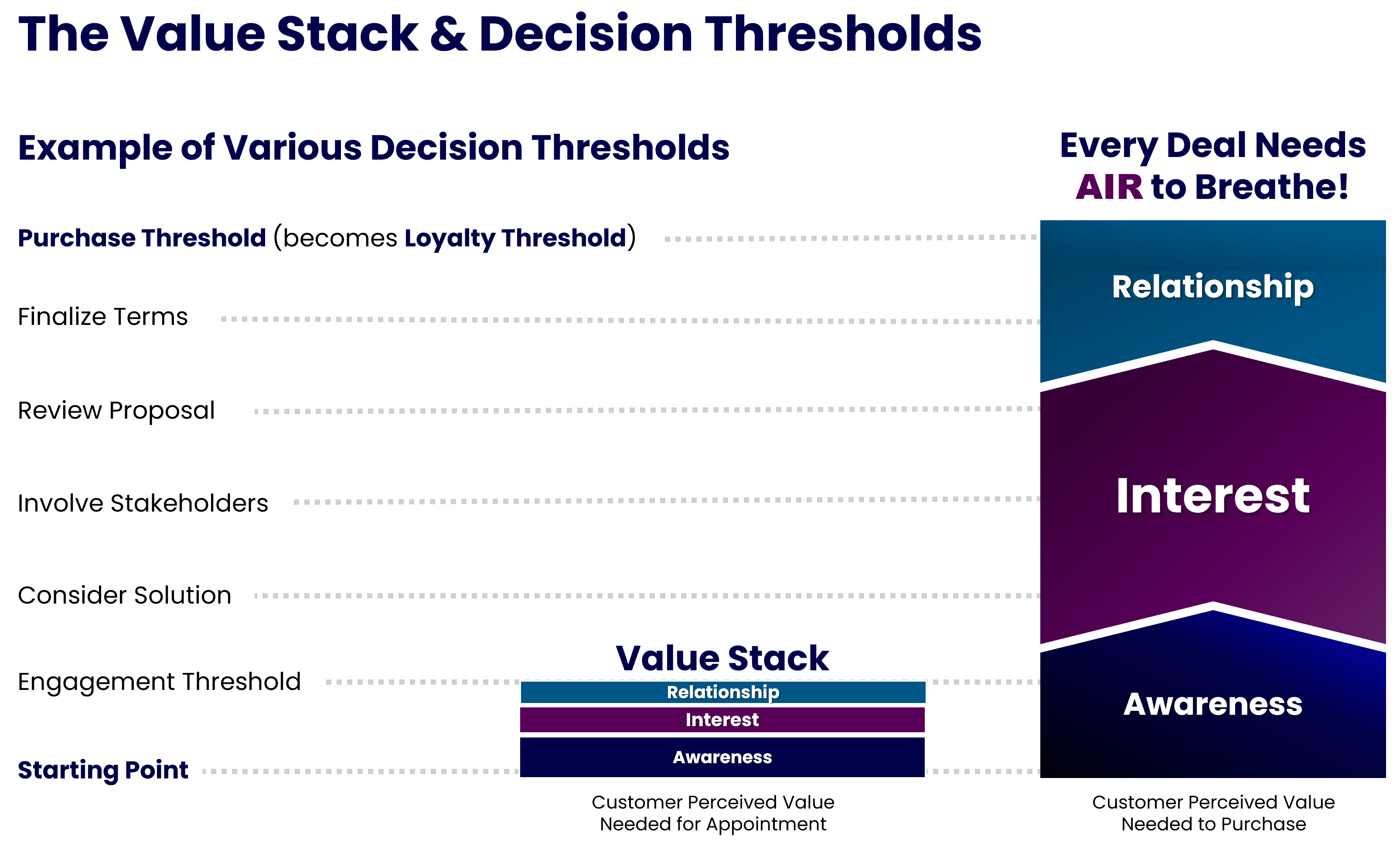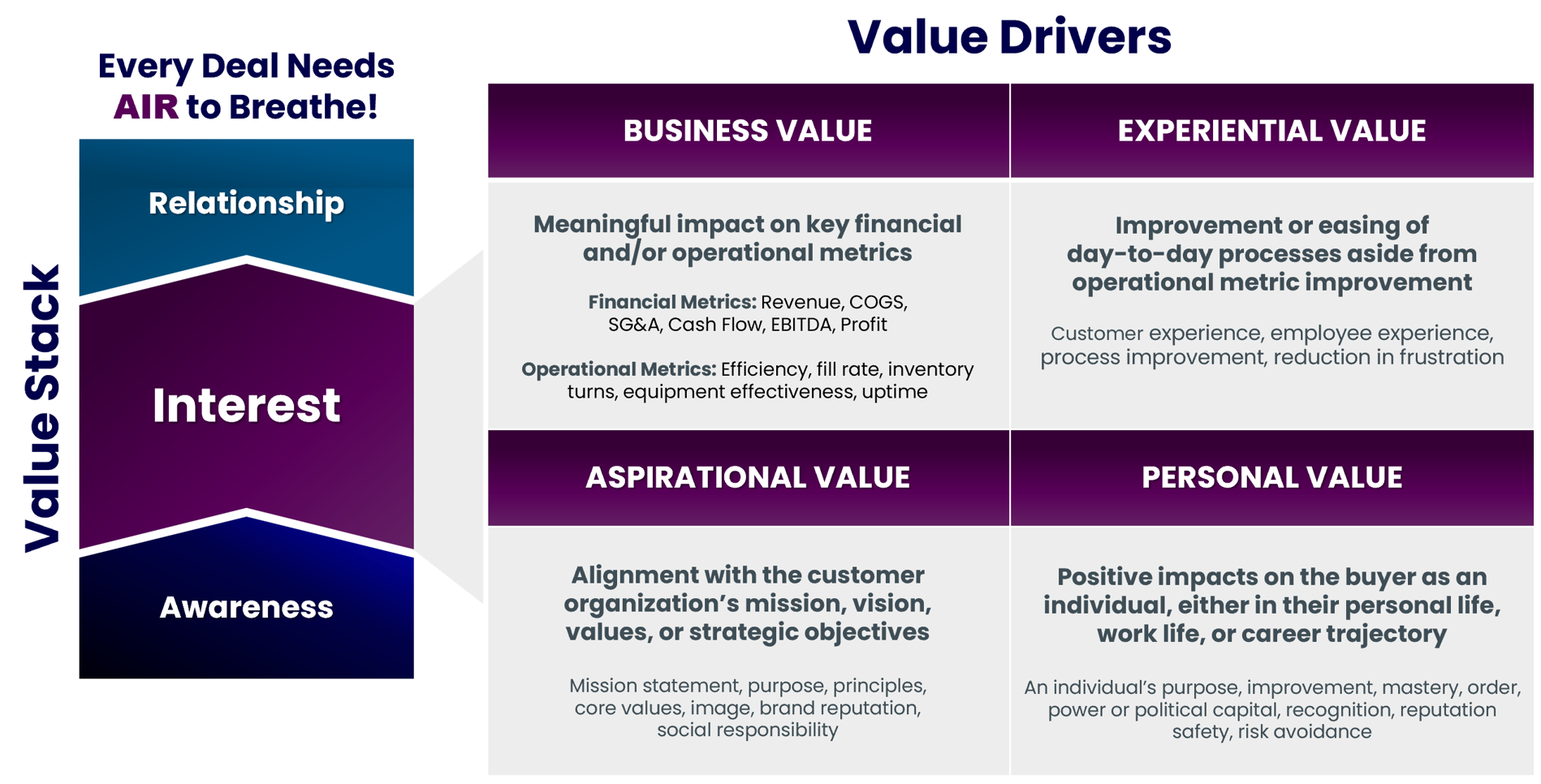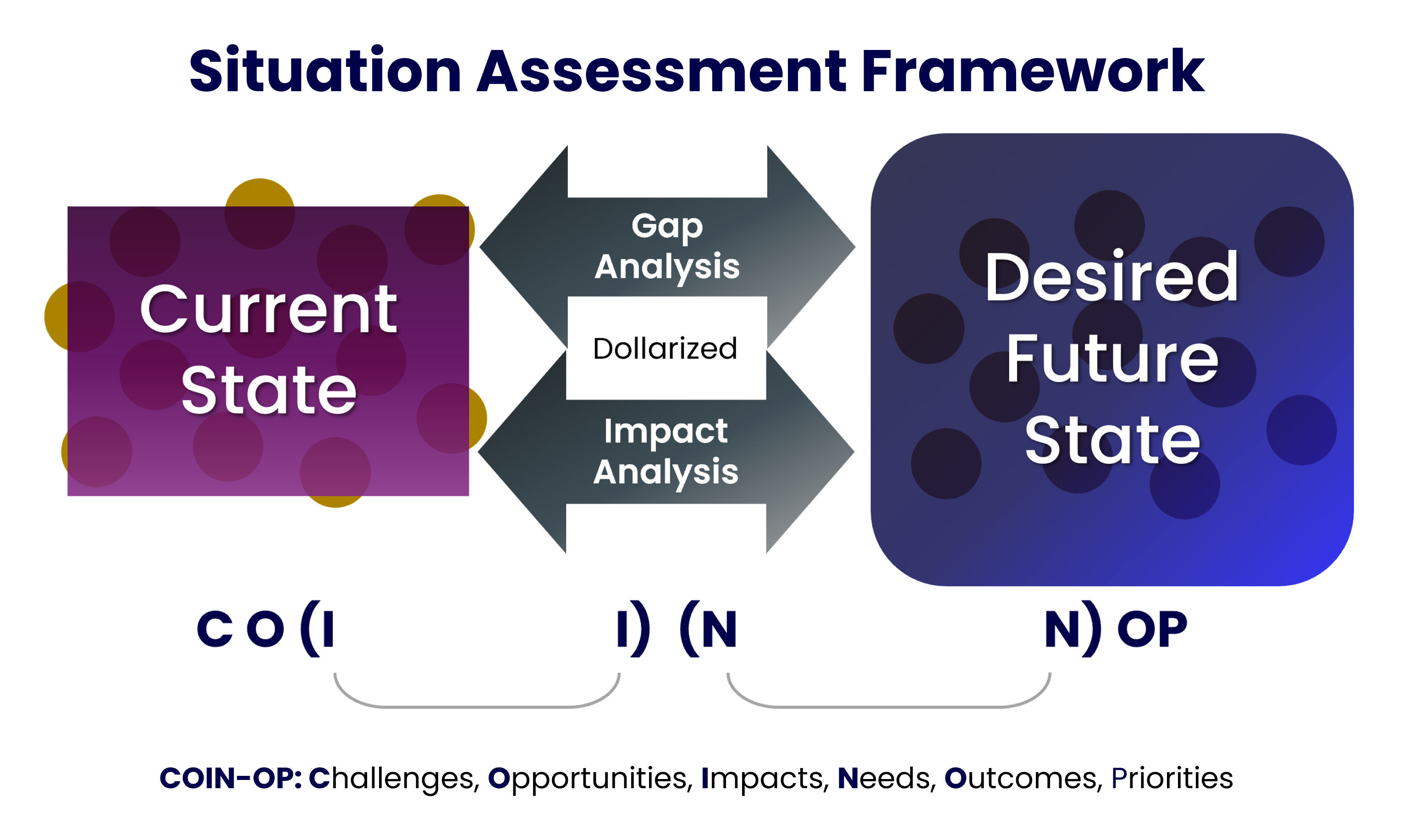How to Radically Improve Your B2B Sales Win Rates
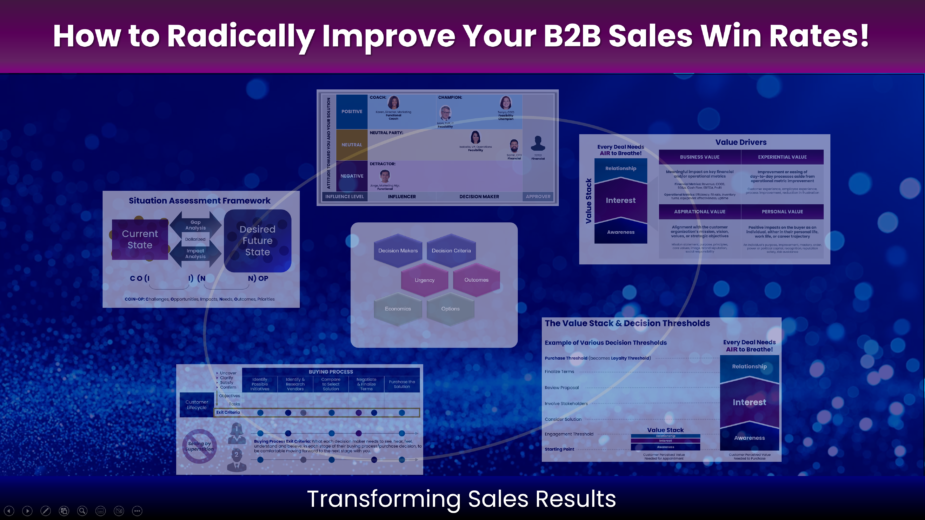
In this post, I’m going to share some simple concepts that I’ve seen deliver radically improved results across a sales force. And by “radically,” I mean improve opportunity management effectiveness and skyrocket win rates by 25-40%. I’ve been part of delivering these results, multiple times in my career, for both employers and clients. It’s entirely possible.
The advice comes from Modern Sales Foundations, a course that was developed based on over 16+ years of top sales performer analysis, modernized for working with today’s buyers.
Let’s dig in.
Qualification
First up, is qualification. This seems obvious, but I’m not going to get into the various qualification models today or teach the pieces and parts. That’s obviously important, but it’s a separate topic for a different day.
Instead, I’ll offer something you can consider regardless of the specific method you use – the levels of qualification – which is something that I rarely hear discussed.
- The first step is to determine the level of early lead qualification that’s required, to continue talking and exploring. As always, this is contextual, but you should establish a lighter, minimum requirement to avoid disqualifying too early. Great sellers often use insights, data, case studies, and expert discovery to unearth or create an opportunity that the prospect may not initially be thinking about or aware of yet.
- The second step is to determine the level of qualification needed later, to continue pursuing the opportunity. This fuller qualification prevents sellers from chasing down rabbit holes and wasting time on deals that aren’t going anywhere – or at least not at the present time – and ensures that you have a reasonable chance to win the business. This level of qualification is a reality check that often occurs during or soon after discovery. (Although, in complex B2B opportunities, especially with longer sales cycles, qualification – like discovery – may be ongoing, because new stakeholders are introduced, others leave, budgets shift, and in general, things change.)
My point here, is that you should make a purposeful determination on these levels, clearly define them, train them, and coach to them. They should be well documented in your CRM, preferably with a scoring system. This allows managers to assess the effectiveness of the rep’s qualification by asking questions and digging into the details. It also allows sales operations to do a multivariate regression analysis of the data, over time, to correlate qualification elements and the ratings to wins and losses.
Qualification is also very contextual. On the elements of timing and urgency – as just one example – if your prospect initiated the contact, asking about timeline and assessing urgency is sensible upfront. If you initiated the contact, timing remains important, but it’s not as crucial immediately – and it’s your job to uncover or create urgency and to build a compelling business case – assuming there is one.
Ignoring these nuances, and not training sellers to apply judgment to address them, is one reason that companies implement a qualification method, but still don’t see better results afterward. Don’t let that be you. Realty is messy and “the map is not territory.” Get into the gray areas and nuances, foster judgment, capture ratings, and analyze the data, when you can.
Map the Buyer Landscape
The next concept is mapping the buyer landscape for opportunities in motion. In addition to having the right decision makers in the deal, which is part of qualification, it’s important to assess the landscape and relationships. Here’s what I mean.
To start, assess the Buyer Type for each stakeholder. Are they a:
- Financial Buyer, who is concerned about costs and outcomes, and who owns the budget or has funding control?
- Feasibility Buyer, who is concerned about how your solution will work in their company, in context?
- Functional Buyer, who is a user of your solution and is impacted by the day-to-day use case and process or workflow changes?
Then, assess their Attitude toward you and their Buyer Roles. First, do they view you, your company, and your solution:
- Positively?
- Neutrally?
- Negatively?
And then, because of that, are they:
- An Advocate for you? And if so, might they be an internal Coach, or better yet, a full-fledged Champion?
- A Neutral Party, who is sitting on the fence, or at least so far?
- Or, are they a Detractor, for some reason, who may be advocating for another solution, or just against you and yours?
Next is their level of Influence. Are they:
- An Influencer, who has some level of recognized expertise, sway with the decision makers, or political capital?
- A Decision Maker with the authority to make a purchase commitment (who perhaps controls the budget or funding decision)?
- Or, are they a behind-the-scenes Approver, who could sweep in at the last minute to approve – or veto – your proposal? (And, do you even know if there is a lurking Approver?)
Also, keep in mind that there is a sliding scale for these aspects. It’s rarely cut and dried or black and white. Both Buyer 1 and Buyer 2 may be Influencers, but Buyer 2 may have much more clout in the organization.
Once you have mapped out this Buyer Landscape, you will have a much better understanding of your buyers and the current state of the landscape, and what you need to do differently to increase the likelihood of a win.
Manage Buying Process Exit Criteria
Another important concept is Buying Process Exit Criteria. Every process has stages, stage names, objectives for each stage, tasks to be done, and exit criteria, or things that must be completed in one stage in order to move to the next. (This applies to a customer lifecycle, the buying process within it, and your sales process which should be mapped to it.)
So, buying process exit criteria, then, are whatever each stakeholder (influencers and decision makers) needs to see, hear, feel, understand, or believe, in the current stage of their buying process, to feel comfortable moving forward to the next stage, with you. For some buyers, exit criteria may be the same, or the same in the current stage. And sometimes, exit criteria may be very different between buyers or stages.
[click image to view a larger version]
This is why selling to multiple decision makers is referred to as “the complex sale.” Most sellers do the same thing, the same way, for every buyer, every time. But when you uncover, clarify, satisfy, and confirm the satisfaction of the exit criteria for each buyer in each stage, you take the effectiveness of your opportunity management to a whole new level.
Pump Up Your Value Stack with AIR
Create a Compelling Business Case
I mentioned creating a compelling business case earlier, in Qualification. When doing discovery, which I call a Situation Assessment, you need to document the current state and the desired future state, as well as impacts and possible outcomes, dollarize it, and use that to show value and create a compelling business, for closing the gap.
[click image to view a larger version]
And then, you need to communicate the value – not according to what you think it is – but based on how your buyers define value, and like exit criteria, it will be different for different buyers (based on their COIN-OP and Value Drivers).
By the way, everything I’ve shared today is straight out of my Modern Sales Foundations sales methodology and training course, co-authored by Doug Wyatt and available through SPARXiQ. It’s a consultative approach that is buyer-centric, value focused, and outcome oriented, created based on over 16+ years of analyzing what top sales performers do differently. If you’d like to learn more, review the link above, and watch this 5-minute video. I’m happy to set you up with a way to explore it on your own, as well. Reach out here.
So, there you have it, sales pros. Follow these concepts and watch your opportunity management improve and your win rates skyrocket!
Closing Thoughts
I hope this post has been helpful. If you’d like to talk about any of these concepts or get some guidance, you know how to find me.
Thanks for reading, be safe out there, and by all means… let’s continue to elevate our sales profession.
Mike
Follow my work and connect
- The Building Blocks of Sales Enablement Book: https://bit.ly/BBofSE
- Building Blocks, Close Up! Content Repository: https://bit.ly/BBCU-Newsletter
- The Building Blocks of Sales Enablement Course: https://GoFFWD.com/Blocks
- SPARXiQ Blog: https://sparxiq.com/author/mikekunkle
- Distribution Strategy Group Blog: https://distributionstrategy.com/author/mike-kunkle/
- Sales Effectiveness Straight Talk Webinars: https://bit.ly/MikeKunkle-OnDemand(60 Free Recorded Webinars)
- LinkedIn Articles: http://bit.ly/MK-LinkedInArticles
- LinkedIn Profile: https://www.linkedin.com/in/mikekunkle
- Twitter: https://twitter.com/mike_kunkle
- Instagram: https://www.instagram.com/mike_kunkle/
- TikTok: https://www.tiktok.com/@mike_kunkle
About Mike
Mike Kunkle is a recognized expert on sales training, sales effectiveness, and sales enablement. He’s spent over 30 years helping companies drive dramatic revenue growth through best-in-class training strategies and proven-effective sales transformation systems – and he’s delivered impressive results for both employers and clients. Mike is the founder of Transforming Sales Results, LLC and works as the Vice President of Sales Effectiveness Services for SPARXiQ, where he designs sales training, delivers workshops, and helps clients improve sales results through a variety of sales effectiveness services. Mike collaborated with Doug Wyatt to develop SPARXiQ’s Modern Sales Foundations™ curriculum and also authored the SPARXiQ’s Sales Coaching Excellence™ course. His book, The Building Blocks of Sales Enablement, is available on Amazon and The Building Blocks of Sales Enablement Learning Experience is available through FFWD.
